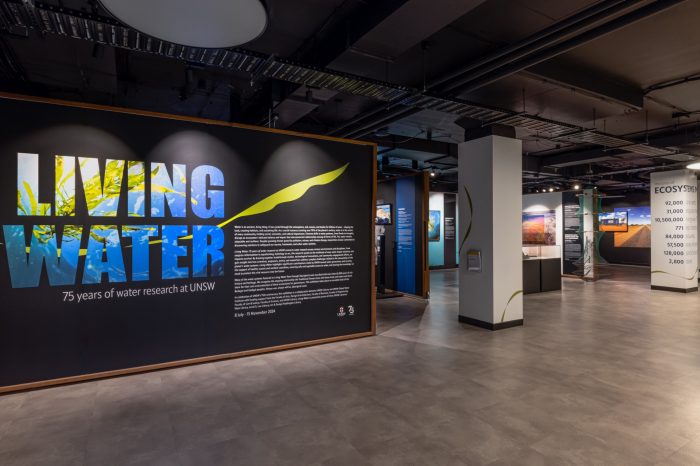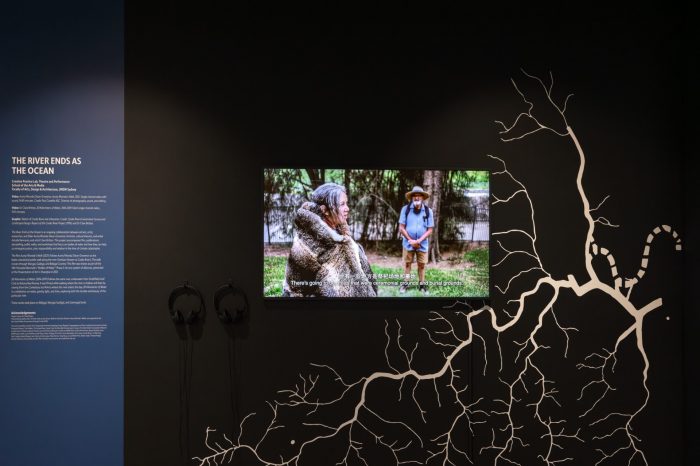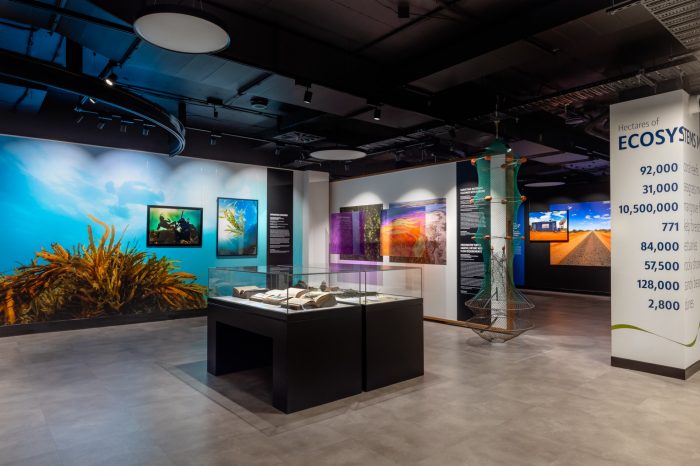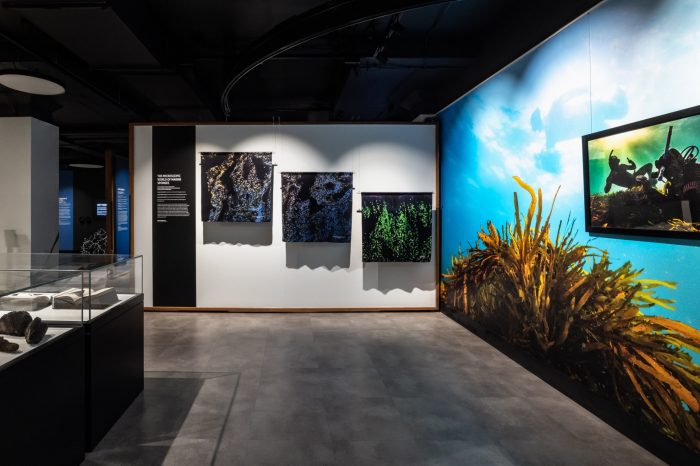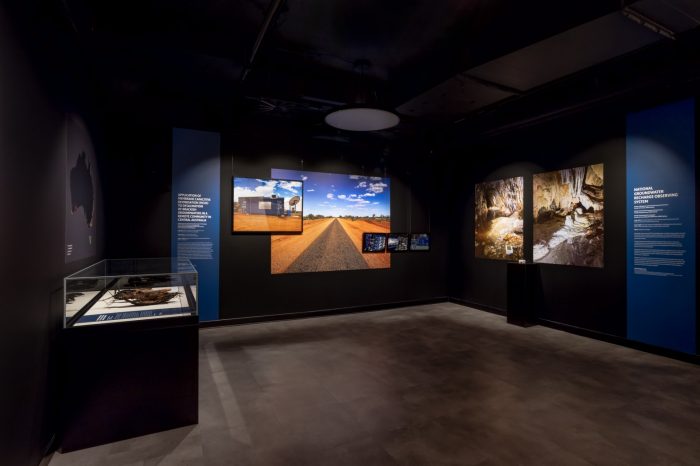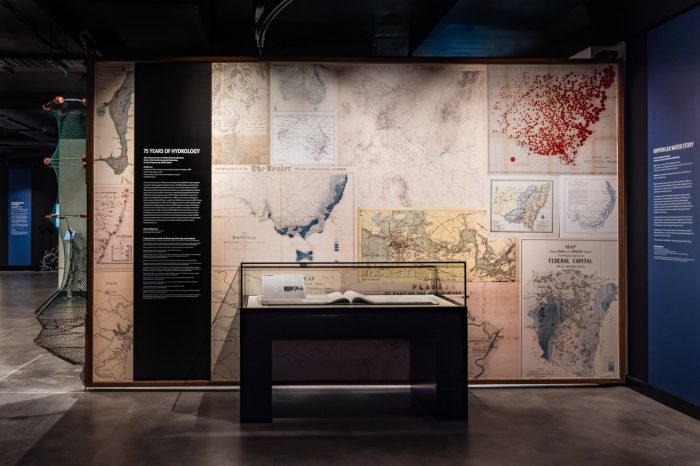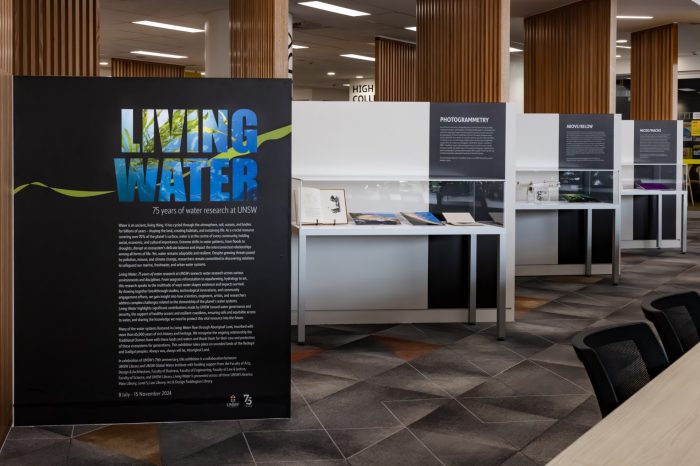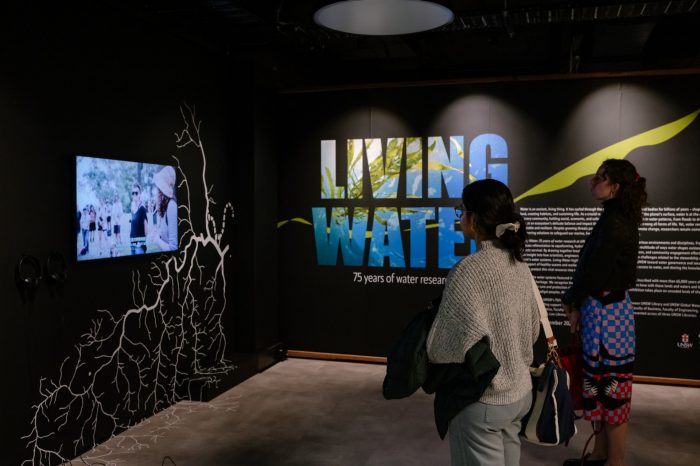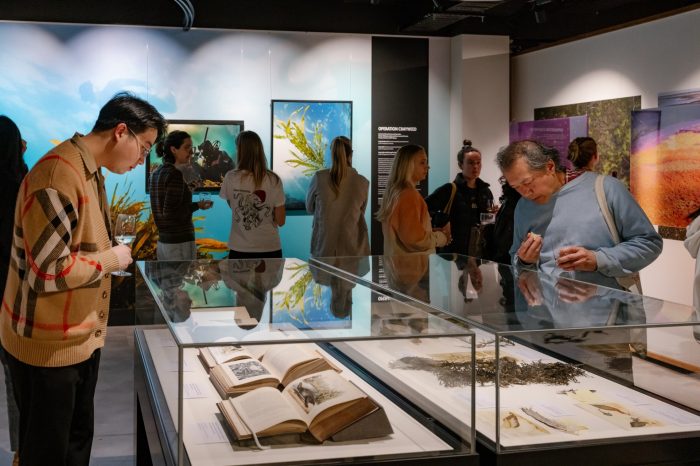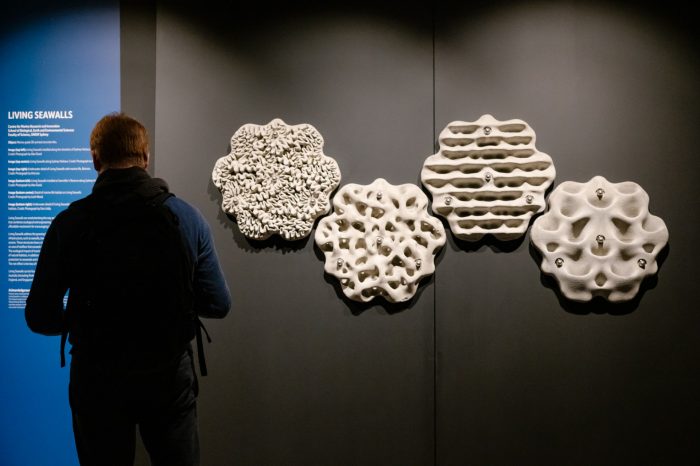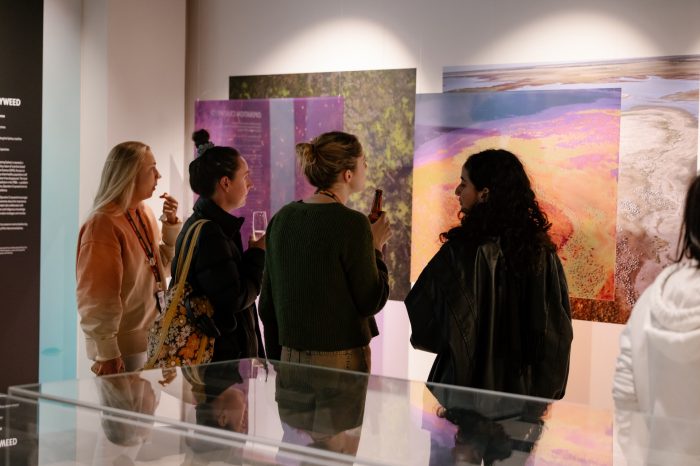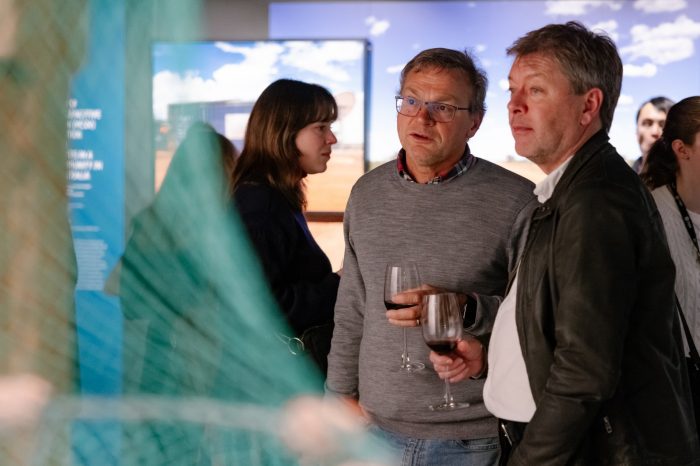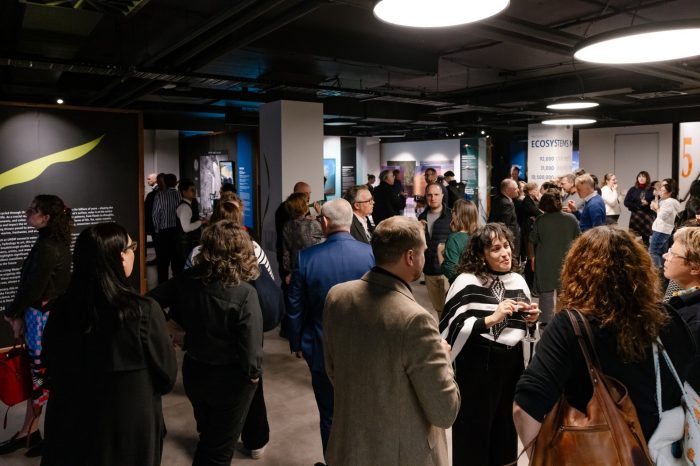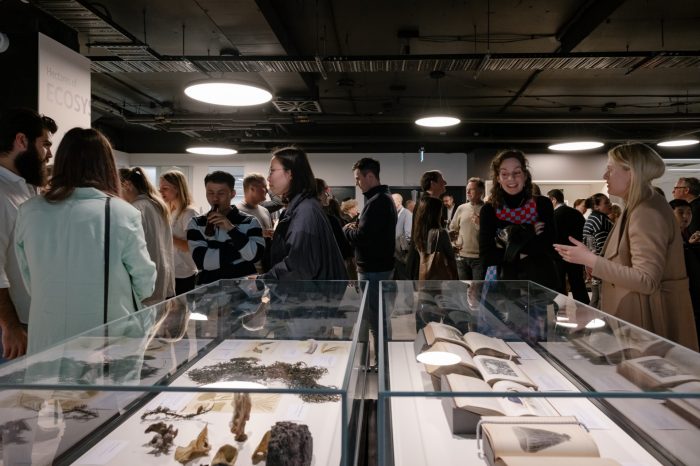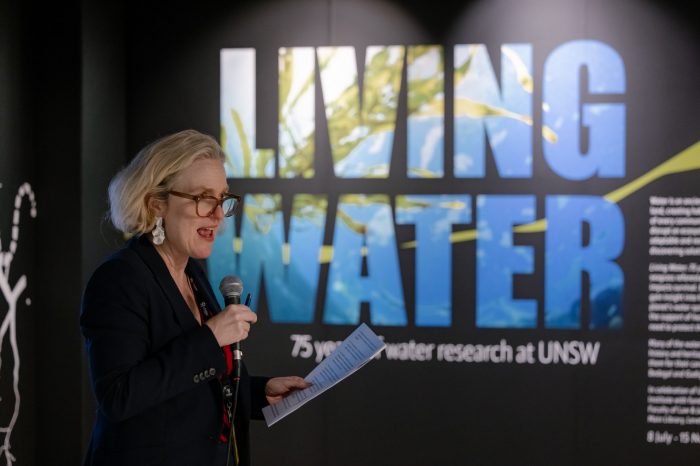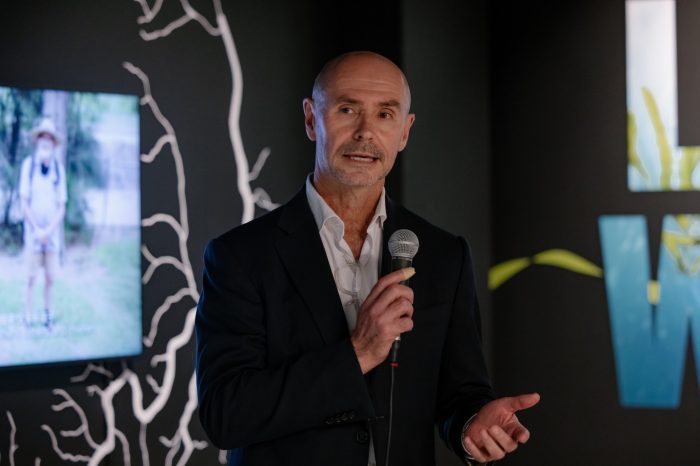Living Water: 75 years of water research at UNSW
This exhibition reflects, celebrates and reaffirms UNSW’s commitment to the stewardship of the planet’s marine, freshwater, and urban water ecosystems.
When:
8 July - 15 November 2024
Where:
Level 5 Main Library
Ground Level Law Library
Art & Design Paddington Library
Project partner:
UNSW Global Water Institute
Funding support:
Faculty of Arts, Design & Architecture
Faculty of Business
Faculty of Engineering
Faculty of Law & Justice
Faculty of Science
UNSW Library
Water is an ancient, living thing. It has cycled through the atmosphere, soil, oceans, and bodies for billions of years – shaping the land, creating habitats, and sustaining life. As a crucial resource covering over 70% of the planet’s surface, water is at the centre of every community, holding social, economic, and cultural importance. Extreme shifts in water patterns, from floods to droughts, disrupt an ecosystem’s delicate balance and impact the interconnected relationships among all forms of life. Yet, water remains adaptable and resilient. Despite growing threats posed by pollution, misuse, and climate change, researchers remain committed to discovering solutions to safeguard our marine, freshwater, and urban water systems.
Living Water: 75 years of water research at UNSW connects water research across various environments and disciplines. From seagrass reforestation to aquafarming, hydrology to art, this research speaks to the multitude of ways water shapes existence and impacts survival. By drawing together breakthrough studies, technological innovations, and community engagement efforts, we gain insight into how scientists, engineers, artists, and researchers address complex challenges related to the stewardship of the planet’s water systems. Living Water highlights significant contributions made by UNSW toward water governance and security, the support of healthy oceans and resilient coastlines, ensuring safe and equitable access to water, and sharing the knowledge we need to protect this vital resource into the future.
In celebration of UNSW's 75th anniversary, this exhibition is a collaboration between UNSW Library and UNSW Global Water Institute with funding support from the Faculty of Arts, Design & Architecture, Faculty of Business, Faculty of Engineering, Faculty of Law & Justice, Faculty of Science, and UNSW Library.
Header image: Operation Crayweed. Photographer: John Turnbull.
Accessibility: UNSW Main Library, Law Library and Paddington Library are wheelchair accessible. Large-text booklets and braille exhibition guides are available at all libraries. An audio-described guide is available at Main Library.
-
75 years of hydrology - School of Civil and Environmental Engineering (Engineering)
Accounting for outside options in discrete choice models: An application to commercial fishing effort - School of Economics (Business)
Application of Membrane Capacitive Deionisation (MCDI) to Desalination of Brackish Groundwaters in a Remote Community in Central Australia - School of Civil and Environmental Engineering, School of Electrical Engineering and Telecommunications (Engineering)
CoastSnap - School of Civil and Environmental Engineering (Engineering)
Estimating the Effectiveness of Forest Protection using Regression Discontinuity - School of Economics (Business)
Freshwater turtle habitat, dietary and flow requirements - School of Biological, Earth and Environmental Sciences (Science)
Improving International Law Regulation of Maritime Autonomous Vessels - School of Global and Public Law (Law & Justice)
Improving technologies for inland aquaculture in Papua New Guinea - School of Biological, Earth and Environmental Sciences (Science)
Living Seawalls - School of Biological, Earth and Environmental Sciences (Science)
The microscopic world of marine sponges - School of Biological, Earth and Environmental Sciences (Science)
National Groundwater Recharge Observing System - School of Biological, Earth and Environmental Sciences (Science), School of Civil and Environmental Engineering (Engineering), School of Humanities & Languages (Arts, Design & Architecture)
Ngapa Yaan (Murrawarri) Niibi Aanmitaagzi (Northern Cree) - School of Arts & Media (Arts, Design & Architecture)
Ocean Accounting: Why Numbers Tell a Deeper Story - School of Global and Public Law (Law & Justice)
Operation Crayweed - School of Biological, Earth and Environmental Sciences (Science)
Surveying waterbird colonies with a drone - School of Biological, Earth and Environmental Sciences (Science)
Restoring endangered Posidonia australis seagrass meadows in NSW - School of Biological, Earth and Environmental Sciences (Science)
Rippon Lea Water Story - School of Humanities & Languages (Arts, Design & Architecture)
The River Ends as the Ocean - School of Arts & Media (Arts, Design & Architecture)
Exhibition text
See the exhibition catalogue for essays and the list of works featured. Download the Living Water large-text exhibition guide PDFs below.
UNSW Main Library large-text guide (8.2 MB PDF)
UNSW Law Library large-text guide (179 KB PDF)
UNSW Paddington Library large-text guide (169 KB PDF)
Video
Exhibition image gallery
Public programs image gallery
Audio guide - Main Library
Curator of Special Collections & Exhibitions at UNSW Library, Dr Megan R Fizell audio-describes the exhibition and works featured in Living Water. The approximate run time is 18 minutes.
-
Transcription of audio description at Exhibition entry
This audio guide to Living Water features four stops with information about the exhibition themes and descriptions of select displays. My name is Megan Fizell, and I am the Curator of Special Collections & Exhibitions at UNSW Library. You can access this guide on the UNSW Library exhibition page or by scanning the QR codes using your own device or smartphone in the space. This is stop one, the exhibition introduction.
Welcome to the exhibition Living Water. The exhibition dates are 8 July to 15 November 2024, in the Level 5 exhibition space of UNSW Main Library. The exhibition is also on view at UNSW Law Library and UNSW Paddington Library. Please note that some displays are suspended from the ceiling. These areas have been demarcated with tactile tape on the floor.
This room contains two adjoining walls painted black. On the right is the exhibition title wall. Large letters cut from an underwater photo of green seagrass floating through clear blue ocean water spell “LIVING WATER”. A long green tendril of seaweed intersects the word “WATER” and extends up towards the right-hand corner of the wall. To the right of the title and below the twisting blade of seaweed is the exhibition text in white font.
The text reads: Water is an ancient, living thing. It has cycled through the atmosphere, soil, oceans, and bodies for billions of years – shaping the land, creating habitats, and sustaining life. As a crucial resource covering over 70% of the planet’s surface, water is at the centre of every community, holding social, economic, and cultural importance. Extreme shifts in water patterns, from floods to droughts, disrupt an ecosystem’s delicate balance and impact the interconnected relationships among all forms of life. Yet, water remains adaptable and resilient. Despite growing threats posed by pollution, misuse, and climate change, researchers remain committed to discovering solutions to safeguard our marine, freshwater, and urban water systems.
Living Water: 75 years of water research at UNSW connects water research across various environments and disciplines. From seagrass reforestation to aquafarming, hydrology to art, this research speaks to the multitude of ways water shapes existence and impacts survival. By drawing together breakthrough studies, technological innovations, and community engagement efforts, we gain insight into how scientists, engineers, artists, and researchers address complex challenges related to the stewardship of the planet’s water systems. Living Water highlights significant contributions made by UNSW toward water governance and security, the support of healthy oceans and resilient coastlines, ensuring safe and equitable access to water, and sharing the knowledge we need to protect this vital resource into the future.
Many of the water systems featured in Living Water flow through Aboriginal Land, inscribed with more than 65,000 years of rich history and heritage. We recognise the ongoing relationship the Traditional Owners have with these lands and waters and thank them for their care and protection of these ecosystems for generations. This exhibition takes place on unceded lands of the Bedegal and Gadigal peoples. Always was, always will be, Aboriginal Land.
In celebration of UNSW’s 75th anniversary, this exhibition is a collaboration between UNSW Library and UNSW Global Water Institute with funding support from the Faculty of Arts, Design & Architecture, Faculty of Business, Faculty of Engineering, Faculty of Law & Justice, Faculty of Science, and UNSW Library.
The black wall to the left of the title displays a TV screen with two sets of headphones mounted on the left. Surrounding the screen is a white schematic of a river system that extends onto the floor. The main channel of the river creates a sinuous, winding path along the wall with smaller streams fanning out like a complex root system. Playing on the TV is The River Ends as the Ocean, a project encompassing film, publications, storytelling, public walks, and workshops that focus on bodies of water and how they can help us reimagine justice, care, responsibility, and relation in the time of climate catastrophe.
The first film, Aunty Rhonda’s Walk, follows activist, artist, researcher, and Elder Aunty Rhonda Dixon-Grovenor as she leads a durational public walk along the river Gooliyari (known as Cooks River). The walk moves through Wangal, Gadigal, and Bidjigal Country. The second film, 20 Kilometres of Water, follows the same river underwater from Strathfield Golf Club to Botany Bay/Kamay. It was filmed while walking where the river is shallow and then by rowing from Canterbury Ice Rink to where the river enters the bay. The film is a meditation on water, gravity, light, and time, exploring both the trouble and beauty of this particular river.
-
Transcript of audio description at Gallery 1
This is the second stop in the audio guide for Living Water. The dark exhibition space contains three walls painted black and a large 3-channel projection spanning the back wall. To the left is an angled structure displaying rounded, ornate cement tiles. The adjacent wall has two long twisting leaves of green seaweed stretching along the bottom with a series of six framed photographs of underwater scenes and harbour seawalls and a separate framed illustration of a lobster hanging above. On the back wall is a video depicting scenic landscapes of rivers, forests, and snowy vistas, with a third seaweed leaf running along the bottom and curving up toward the right corner of the wall. To the right is a large black-and-white aerial map with topographic details of a coastal area and smaller framed photographs of a beach landscape.
The first display on the left is titled Living Seawalls and features a row of four large decorative cement tiles affixed to an angled black wall. Each tile has a honeycomb-like texture and pattern that replicates natural or biological forms. They have layered, undulating ridges and the texture of the tiles is characterised by an array of interconnected pores that imitates cellular structures or sponge-like materials.
Living Seawalls are revolutionising the way we build in the oceans by addressing the growing but often overlooked consequence of marine built infrastructure, such as seawalls, breakwaters, and pier pilings, to biodiversity loss in our oceans. Through innovative design that combines ecological and engineering know-how, researchers developed an adaptable and affordable mechanism for encouraging marine life back to waterside infrastructure.
In the middle of the room sits a low bench where visitors are invited to pause, listen, and watch the 3-channel projection centred on the wall opposite Living Seawalls. The video projection forms a panoramic view of shifting tranquil landscapes. The three side-by-side images alternate between bodies of water, forests, sunsets, snowy mountains, and winding rivers. The film Ngapa Yaan (Murrawarri) Niibi Aanmitaagzi (Northern Cree) is part of an ongoing artistic and knowledge exchange between First Peoples women performance makers from Australia and Turtle Island / Canada.
Through a durational discursive practice of storytelling and story-weaving connected by a common theme – WATER – the project engages with historical references to water from across different nations and countries. These stories, told in Murrawarri and Northern Cree languages, emerge from juxtaposed landscapes, one a frozen inland lake, the other in an often dry, red, dusty land. The project asks, what knowledge about water is contained and transferred through each story? How do these stories define a relationship to water? The work foregrounds the crucial connection between language, story, and Country.
-
Transcript of audio description at Gallery 2
This is the third stop in the audio guide for Living Water, featuring an exhibition space with a series of colourful displays. On the left is a white wall displaying three suspended silken fabrics. In the centre is a sea blue wall picturing an underwater scene of crayweed and divers wearing scuba gear. The right-hand wall displays two aerial photographs of waterbird breeding grounds with purple and orange acrylic panels suspended from the ceiling directly in front. On the far right is a long turtle net hanging from the ceiling, stretching to the floor. Two glass display cases sit in the centre of the room filled with rare books and dried specimens ranging from sea sponges to crayweed and feathers.
The display on the left includes three square silk panels suspended in front of a white wall on timber dowels. The silks are black with a unique pattern of close-up details of fluorescing microbes. The images feature numerous bright specks glowing yellow, blue, purple, and green against the dark background. The bright clusters and streaks of colour resemble a satellite image of city lights at night.
The silk panels depict the microscopic world of marine sponges, organisms that are abundant in the marine ecosystem and pump large volumes of seawater through their porous bodies. These sponges also serve as a habitat for many of the microbes depicted on the silk panels, which are responsible for nutrient and carbon uptake, as well as removing pollutants and toxins from seawater. The symbiotic relationship between sponges and microbes contributes toward maintaining water quality and influences global geochemical cycles in the marine ecosystem.
Stretching across the entire back wall is a vibrant mural depicting an underwater scene of yellowish-brown crayweed against a background of clear blue water. The shadowy figure of a diver is visible, hovering above the crayweed near the water's surface. Overlaid on the mural's right side are two photographs in black frames. The photo on the left captures two individuals scuba diving in blue-green water. The divers, equipped with full scuba gear, including a mask and snorkel, are positioned near the bottom of the seabed near a rocky surface covered with crayweed. Sunlight filters through the water from above, creating a beautiful dappled light effect. The photograph on the right shows an underwater scene with sunlight streaming through the water, illuminating a cluster of yellow-green crayweed. The perspective is from below, looking up towards the surface, where the crayweed gently floats, surrounded by tiny bubbles. The bottom of the ocean is visible in the lower part of the image, covered with rocks and marine plants.
The photographs depict Operation Crayweed, a conservation initiative aimed at restoring Sydney’s crayweed, a type of seaweed vital for marine biodiversity. This project focuses on the transplantation of crayweed from areas outside of Sydney where healthy populations still survive to areas within the Sydney Metropolitan Coastline where it has disappeared. The local extinction of crayweed in Sydney was likely caused by water pollution in the 1980s – a problem that has now been resolved. By restoring crayweed populations, Operation Crayweed aims to improve habitat quality for marine life and enhance coastal resilience.
The display on the right features four large rectangular photographs, two aerial landscapes mounted on a white wall, and two printed on semi-transparent acrylic, suspended from the ceiling hung directly in front, approximately 50cm from the wall. The acrylic panels are colourful infrared views of the same landscapes. The wall-mounted photograph on the left depicts a drone image of a waterbird breeding colony in a lush, green landscape. The area appears to be a wetland or marsh, with dense vegetation interspersed with darker patches of water or mud. In the acrylic panel suspended in front, the infrared image shows the birds appearing as warm orange spots against a dark purple background. On the right, the wall-mounted drone image captures a bustling waterbird breeding colony on a sandy beach surrounded by water. The land features patches of green vegetation, with clusters of birds visible. The acrylic infrared image shows varying heat intensities. The brightest areas, in white and light yellow, indicate the highest temperatures due to the concentration of birds. Darker regions in purples and dark blues represent cooler temperatures, indicating water or vegetation around the nesting sites.
Waterbirds, which are declining across eastern Australia, play an important role in the ecosystem, acting as top-order predators and natural pest controllers. Understanding their breeding requirements is essential to their conservation. Breeding typically occurs over water, and the availability of suitable habitats, influenced by factors such as river flows and inundation, greatly affects breeding success. Many of these waterbirds breed in large aggregations in remote Australia and may include more than 100,000 nesting birds. It is difficult to estimate the size and progression of breeding colonies, but drones offer a birds-eye view of the colonies and individual nests. Using drones, scientists can map colony extents, estimate the age of chicks, and gauge breeding conditions.
-
Transcript of audio description at Gallery 3
This is the fourth and final stop in the audio guide for Living Water. The darkened room has three walls painted black and one wall, immediately to the left of the entry, covered with historic Australian rainfall and flood maps. In front of the map-covered wall sits a glass display case containing a large open book displaying a black and white map of the Sydney region crisscrossed with curving red lines. The adjacent wall has a photograph of a microphone suspended above rippling water. To the right is a map that appears as a dark silhouette of the Australian continent against a black background with bright splotches of colour along the coastal regions. Below this is a display case containing charred pieces of wood of varying shapes and sizes. On the far back wall hangs a large central photograph of a dirt road leading towards the horizon under a blue sky. Overlaid on top of this image is a framed picture of a shipping container with solar panels on its roof. To the right are three smaller framed virtual reality renderings of machinery and systems. The wall to the right of the entry features two large photos of an underground cave with a narrow black plinth directly in front containing a small square-shaped piece of field equipment.
Audible in the space is a sparse soundscape of water trickling through subterranean pipes and channels. This includes reverberant sounds of water slowly dripping into a cavernous space and low-frequency rumbles. These sounds pair with the image hanging directly across from the room entry, displaying a serene water surface with green lily pads and other vegetation floating on it. Above the rippling water, a microphone appears suspended, capturing the ambient sounds of the environment. On the right side of the image, there are soundwave graphics labelled “Sky,” “Canopy,” “Understory,” “Ground,” and “Subterranean,” indicating that the microphone is recording sounds from different environmental levels.
The soundscore and image are part of the Rippon Lea Water Story, a project exploring waters, memory, plant and animal life, and infrastructure at Rippon Lea, a colonial estate in Melbourne. The project works to challenge the historical meanings of the site – to recognise that it is part of Boon Wurrung Country, connected to a wider ecological and hydrological landscape. The southeast coast of Nairm/Port Phillip Bay is characterised by wetlands, seasonally occurring watercourses seeping groundwater, and freshwater springs. Beginning in the 19th century, water was removed from the surface of this land and gradually piped underground through a process of colonial urbanisation. Rippon Lea sits over this highly modified, watery landscape. The Estate, built in the 1860s, includes an extensive underground watering system that harvests runoff from a naturally occurring spring that was piped underground in the 19th century.
A range of specialist microphones were used to bring awareness to the intricacies of voices and sounds typically not acknowledged at colonial sites: hydrophones listen to the dynamic ecology within the lake; microphones placed down access shafts reveal water flowing under the suburbs; geophones hear the rumblings of trains below the surface. Exploring Rippon Lea’s intricate pipe system opens a door into the subterranean world of Melbourne’s hidden water – the ancient waterways that continue to find ways to flow and the ecologies that these continue to support.
A pair of large photographs of underground cave systems hang on a black wall to the right of the room entry. The picture on the left shows the interior of a rocky mine with rugged walls in various shades of brown and grey. A pool of water reflects the rocky textures, and in the foreground sits a drip logger, a small, square piece of field equipment with a metal plate on the top. The photo on the right shows the interior of a cave with various geological formations. Stalactites hang from the ceiling, and the cave's floor is covered with flowing mineral deposits. A drip logger is perched on a small mound in the centre of the frame.
On a small black plinth in front of the photographs sits a decommissioned drip logger, one of the many placed underground in tunnels, caves, and mines in dozens of locations around Australia to measure the timing of groundwater recharge. A drip logger operates like a miniature drum, detecting the vibrations caused by water drops falling on it and recording this data in its internal memory. It is a small, square-shaped device with white casing, LED indicators, and a socket cap on the side. You are welcome to tap the logger to record your visit to the Living Water exhibition.
The photographs and drip logger are from the National Groundwater Recharge Observing System project, which detects water as it drips into underground spaces during its journey from the terrestrial environment through the ground. Groundwater makes up around 17% of accessible water in Australia and accounts for more than 30% of total water consumption. The project aims to improve our understanding of groundwater recharge through a sensor network deployed in underground spaces located between soils and aquifers across the southeast of Australia. This recharge-observing system will generate knowledge that is fundamental for water resource management.
Past events from this exhibition
Opening event
A Welcome to Country was performed by Aunty Rhonda Dixon-Grovenor, a Gadigal, Bidgigal, and Yuin Elder and Traditional Descendant from the Sydney (Warrane) and saltwater basin and the South Coast of NSW. Martin Borchert, Director & University Librarian, was the event MC, with speeches by Professor Greg Leslie, Director of the UNSW Global Water Institute, and Professor Verity Firth, Vice-President Societal Impact, Equity & Engagement, who gave the opening address.
Event was held on Wednesday 10 July 2024.
Image: Professor Verity Firth at the Living Water opening event. Photographer: Jacquie Manning.
Living Water Oration Series: The Kevin Marshall Lecture
For National Science Week 2024, 'The Kevin Marshall Lecture' reflected on the pioneering studies of microbial ecology by Professor Kevin Marshall and his continuing influence on water research. This was the first in a series of talks that celebrates past and present pioneers of water research at UNSW.
Event was held on Wednesday 14 August 2024.
Image: Professor Kevin Marshall, School of Microbiology (1989). Photographer: UNSW News Service. UNSW Archives. 98A1/15/04/17.
Living Water Oration Series: Celebrating Ronnie Harding
This talk reflected on the pioneering work of Associate Professor Ronnie Harding, and how her legacy continues to influence interdisciplinary environmental studies. This is one of a series of talks that recognises and celebrates past and present pioneers of water research at UNSW.
Event was held on Tuesday 24 September 2024.
Image: Associate Professor Ronnie Harding, founder and Director of Institute of Environmental Studies at UNSW (c2002). UNSW Archives. S2820/1710.
Water@UNSW Symposium
Returning for the first time since 2011, the Water@UNSW Symposium provided a venue for UNSW water researchers to present their work to the UNSW water community and to promote cross-disciplinary water research at UNSW. Presentations covered all water research relating to the use and management of water resources for protecting the aquatic and atmospheric environments.
Event was held on Wednesday 16 October 2024.
Yanma badhu (Dharug) – Water Walk
This public walk considered how water moves through and on Bidgigal and Kamaygal Land. We walked on UNSW Kensington campus to consider this watercourse and the wetlands that surround it, and turned our attention to Country, memory, language, gravity, and timeframes longer than human life spans.
Event was held on Tuesday 22 October 2024.
Image: July 5th Lost in the golf course. Clare Britton and Troy Reid.
Living Water Oration Series: The David Pilgrim Lecture
This lecture reflected on the pioneering studies of civil engineer Emeritus Professor David Pilgrim, and how his work continues to influence water research. This was one of a series of talks that recognises and celebrates past and present pioneers of water research at UNSW.
Event was held on Monday 4 November.
Image: Professor David Pilgrim, School of Civil Engineering (1987). Photographer: Kevin Doig. UNSW Archives. 00A31/C1/D20.


